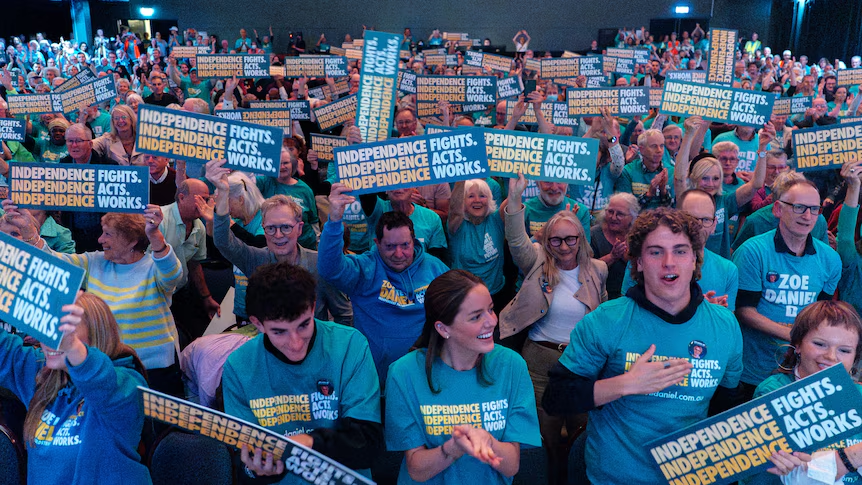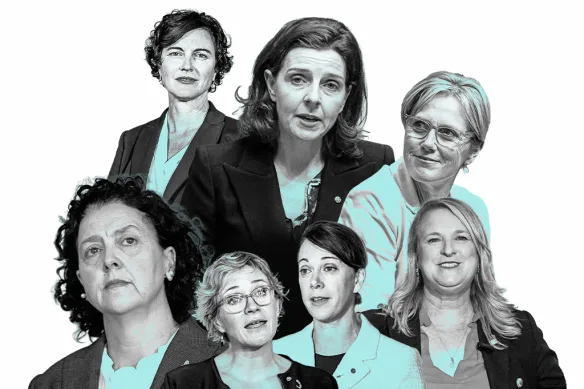Who Are the Teals in Australian Politics?
The Big Idea in 30 Seconds
- Teals are independent MPs — not from Labor or Liberal parties.
- They blend "Liberal blue" with environmental green — hence “teal.”
- They focus on climate action, political integrity, and gender equity.
- Most are women replacing Liberal MPs in wealthy, inner-city seats.

What Is a Teal Anyway?
“Teal” is more than just a pretty color — it's also the label for a group of independent politicians in Australia who shook up traditional politics in the 2022 federal election.
These politicians aren’t part of the big teams — the Liberal Party or the Labor Party. Instead, they ran as independents. That means they campaigned on their own, without a party boss telling them what to say or do. Most of them had similar goals: strong climate action, more women in politics, and cleaning up corruption in Canberra.
The "teal" label is symbolic. It comes from combining Liberal blue with environmental green. These women ran in wealthy areas that usually voted Liberal. But many voters felt the Liberals had stopped listening, especially on climate change.
Where Did the Teals Come From?
The first major “teal” wave hit in 2019. That’s when Zali Steggall, a former Olympic skier-turned-lawyer, won the Sydney seat of Warringah. She beat Tony Abbott, the former Prime Minister, who had held the seat for 25 years. Steggall ran as an independent, focused on climate policy and gender equality. Her win was a big deal — and a sign of what was coming.
But the real “teal revolution” happened in 2022, backed by a grassroots campaign network funded in part by climate activist Simon Holmes à Court. He helped found the Climate 200 campaign, which raised money for community-backed candidates who shared a bold reform vision. These candidates were mostly women. They were professionals and first-timers in politics. And they came ready to challenge sitting Liberal MPs.
The Big Wins (And Big Names)
In May 2022, several teal independents won seats in Parliament House, especially in the House of Representatives (the lower house). These were high-profile victories in areas long held by the Liberal Party.

Some of the most notable teal MPs include:
- Monique Ryan — defeated former Treasurer Josh Frydenberg in the Melbourne seat of Kooyong.
- Sophie Scamps — won in Mackellar, a Sydney beachside seat.
- Allegra Spender — took Wentworth in Sydney’s east.
- Zoe Daniel — a former journalist, won Goldstein in Melbourne.
- Kate Chaney — elected in the Perth seat of Curtin.
- Helen Haines — already in Parliament as an independent for Indi in rural Victoria, aligned herself with teal values.
In the Senate, another prominent "teal-style" figure emerged — David Pocock, a former Wallabies rugby captain, who won a Senate seat in the ACT. Like the teals, he ran as an independent with a focus on climate, integrity, and long-term thinking.
What They Stand For
The teal independents are united by a few key principles — even though they don’t run as an official “party.”
- Climate Action: They want Australia to cut carbon emissions faster and invest in clean energy.
- Government Integrity: They pushed hard for a federal anti-corruption commission. And they got it passed.
- Diversity: Most teals are women. They advocate for more representation and fairness in parliament.
How Are They Different from the Major Parties?
The Liberal Party is center-right. It supports free markets, smaller government, and is popular in business-heavy areas. Many teals used to vote Liberal — or were even former members. But they felt the party had drifted too far from its values, especially on climate and women's issues.
The Labor Party is center-left. It works closely with unions and pushes for welfare, workers’ rights, and public services. But many teal voters didn’t want to swing all the way to Labor. They wanted local representatives who could speak their minds — not just vote along party lines.
That’s where the teals came in: something new in the middle. Less party politics, more real talk.

Are They a Party?
Nope. That’s part of the point. Each teal MP is an independent member. They don’t take orders from anyone else. But they do often vote together on major issues.
Think of them like solo musicians who sometimes form a band for a few gigs. They share values, but not party rules.
Other Independent Leaders to Know
Even before the teal brand took off, there were well-respected independents like Andrew Wilkie. He represents a seat in Tasmania and has been a long-time watchdog against gambling, corruption, and government secrecy.
Wilkie is not officially a teal — but he, Haines, and Pocock often find common ground with teal MPs on integrity and reforms.
So, What’s Next for the Teals?
That remains to be seen. Their success in 2022 showed many Australians are ready for a new kind of politics — less tribal, more focused on real problems.
Books like The Teal Revolution explain how this movement grew from kitchen table conversations into a national force. Another great read is Not Just Lucky, which touches on why more women in leadership roles can reshape power structures, including in politics.
For now, the teals are sitting in Parliament as a new kind of MP — one who answers to their community, not a party whip. Whether they’ll become even more influential in future elections will depend on the same community engagement that got them elected in the first place.
Find your place on the spectrum.
Now that you know the basics of the Australian parties, see where your own views align.
Take the Free Political Test